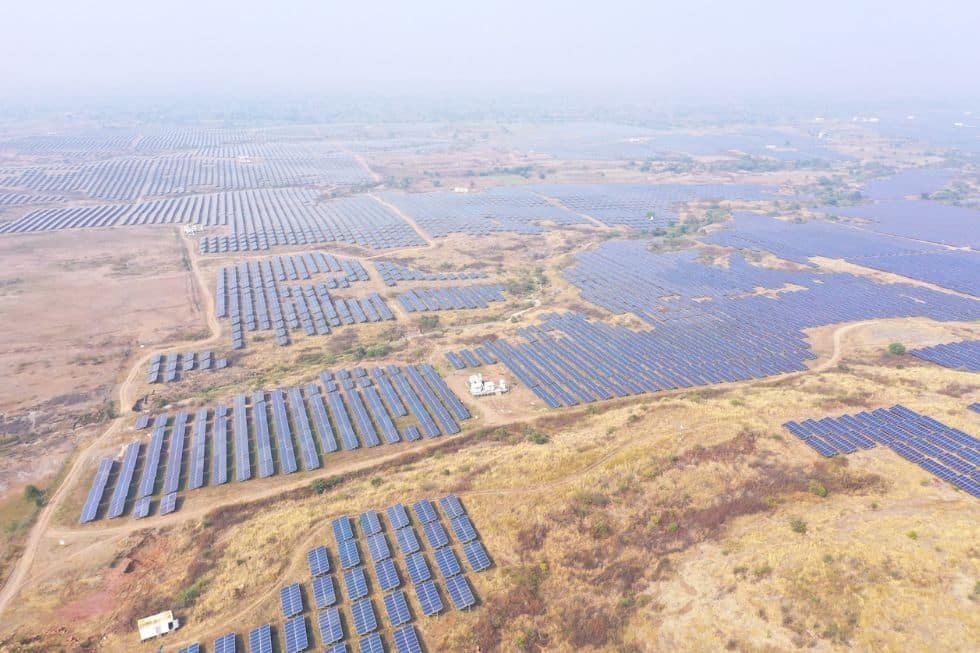As world leaders prepare to gather in Brazil’s Amazon for the 30th UN Climate Conference (COP30) this November, India arrives with a climate story that embodies a complex duality. On one side, the country boasts a booming renewable energy sector: solar output surged by 32% in the first half of 2025, underpinned by aggressive state and private investment. On the other hand, it is reopening 32 previously shuttered coal mines to meet peak summer electricity demand.
This dichotomy is not just a policy-level contradiction; it is India’s lived energy reality. The world’s most populous country faces the herculean task of reconciling its development ambitions with its 2070 net-zero pledge, all while addressing the energy needs of 1.4 billion people.
Solar surges, but coal persists
India’s renewable push is undeniable. With over 119.02 gigawatts of installed solar capacity in mid-2025, the country ranks among the top five globally. The government’s target of 500 gigawatts of non-fossil fuel capacity by 2030 has driven the development of Ultra Mega Solar Parks in Rajasthan, Gujarat and Andhra Pradesh, transforming barren lands into grids of gleaming photovoltaic panels.
These investments are not just about climate goals. They also make economic sense. India’s solar power tariffs fell to a record low of ₹2 per unit ($0.02) in 2020 and stood at around ₹2.56–₹2.57 per unit ($0.03) in late 2024, as approved by the Central Electricity Regulatory Commission—keeping renewables an attractive alternative for distribution companies facing higher coal costs.
Yet coal continues to power over 50% of India’s electricity generation. In June 2025, the Power Ministry greenlit the reopening of 32 abandoned coal mines, citing soaring demand amid a severe heatwave. Electricity consumption hit record levels as air conditioning use spiked across urban centers.
The decision underscores a core challenge: while solar shines at midday, coal provides the steady, dispatchable power required around the clock. With large-scale battery storage still in its infancy and hydro capacity limited, coal remains the country’s energy backbone for now.
Just Transition or just talk?
COP30 places Just Transition at the heart of its agenda. For India, this raises hard questions. What does a just transition look like in the coal districts of Jharkhand, Chhattisgarh and Odisha, where entire communities rely on mining for jobs, livelihoods and local economies?
In towns like Dhanbad and Korba, the net-zero narrative feels distant. Generations have worked in coalfields. Informal workers, many of them women and children, depend on coal scavenging and truck loading for subsistence. If the mines closed, where will they go? Despite central government assurances, local voices worry that economic alternatives remain vague or absent.
Programs like the Just Transition fund, proposed in India’s draft National Electricity Plan, are promising on paper but lack clear pathways for re-skilling or regional development. Unlike Germany, which has invested billions to phase out coal while protecting workers, India’s fiscal room has limits. Without concrete investment in healthcare, education and alternative employment in coal districts, the transition may be more abrupt than just.
Solar corridors and shifting rural economies
Conversely, in the sunny plains of Rajasthan and Gujarat, the rise of solar power is reshaping local economies, though not always smoothly.
In Bhadla, Rajasthan, once a dusty village, the world’s largest solar park sprawls across 14,000 acres. Thousands of temporary construction jobs emerged during the installation phases. Some farmers now lease land to solar developers, generating passive income. However, others express concern over land alienation, water stress and the uneven distribution of benefits. Critics warn that top-down land acquisition for energy projects often marginalizes those without legal titles, exacerbating inequality.
The central government’s Pradhan Mantri Kisan Urja Suraksha evam Utthaan Mahabhiyaan (PM-KUSUM) scheme, which subsidizes solar-powered pumps for farmers, offers a more inclusive model. By enabling decentralized solar production and usage, it allows smallholders to cut input costs and sell surplus power to the grid. Still, its uptake has been uneven across states, often stalling due to bureaucratic delays and lack of awareness.
Between global south leadership and domestic trade-offs
India seeks to position itself as a climate leader of the Global South, amplifying voices from low and middle-income countries demanding climate justice, technology transfer and fair finance. At the Group of 20 (G20) forum (an intergovernmental forum comprising 19 sovereign countries, the EU and the African Union [AU]) and other forums, New Delhi has emphasized “common but differentiated responsibilities” and called out the unmet $100 billion climate finance pledge from developed nations.
At COP30, India will likely repeat its call for equity: rich nations must not only cut their emissions but also support others in transitioning away from fossil fuels. It will advocate for climate finance mechanisms that are accessible, predictable and responsive to national contexts.
Yet India’s domestic trade-offs may raise eyebrows. How does one credibly push for global equity while reviving coal? The answer may lie in India’s developmental compulsions. While per capita emissions remain far below Western levels, India faces intense pressure to deliver jobs, industrial growth and energy access.
Over 7 million Indians still lack regular electricity access — millions more face load shedding. Until renewables become fully reliable and scalable, the state’s social contract may demand that coal continue, at least in the short term.
Straddling the transition: pragmatism or drift?
India’s energy trajectory does not fit neatly into binaries. It is not a simple story of green vs. black, progress vs. pollution. Rather, it is a balancing act shaped by geography, demography and development needs.
Some analysts call this pragmatism — an incremental approach that prevents energy shocks. Others see it as inertia — a reluctance to make tough decisions, such as setting a clear coal phase-out date or investing adequately in energy storage.
What’s clear is that India’s actions are being watched closely. As the world barrels toward the 1.5°C threshold, every country’s pathway matters. India’s scale means that its transition choices will shape global climate outcomes. But its challenges are structural and social; it demands empathy and nuanced understanding.
COP30 and the road ahead
As COP30 unfolds in the Amazon, the symbolism is powerful. A summit held in the heart of the planet’s largest rainforest asks the world to act on the urgency of climate change. For India, this means owning its dual identity: a clean energy frontrunner and a coal-dependent economy in transition.
The success of India’s net-zero mission will depend not only on solar installations and EV rollouts but also on how it treats its most vulnerable — mine workers, marginal farmers and those left behind by energy transitions.
If India can bridge its energy divide while pushing for global climate justice, it may yet emerge not just as a negotiator but as a model. Not because its transition is perfect, but because it is honest, human and ongoing.
[Casey Herrmann edited this piece.]
The views expressed in this article are the author’s own and do not necessarily reflect Fair Observer’s editorial policy.
Support Fair Observer
We rely on your support for our independence, diversity and quality.
For more than 10 years, Fair Observer has been free, fair and independent. No billionaire owns us, no advertisers control us. We are a reader-supported nonprofit. Unlike many other publications, we keep our content free for readers regardless of where they live or whether they can afford to pay. We have no paywalls and no ads.
In the post-truth era of fake news, echo chambers and filter bubbles, we publish a plurality of perspectives from around the world. Anyone can publish with us, but everyone goes through a rigorous editorial process. So, you get fact-checked, well-reasoned content instead of noise.
We publish 3,000+ voices from 90+ countries. We also conduct education and training programs
on subjects ranging from digital media and journalism to writing and critical thinking. This
doesn’t come cheap. Servers, editors, trainers and web developers cost
money.
Please consider supporting us on a regular basis as a recurring donor or a
sustaining member.
Will you support FO’s journalism?
We rely on your support for our independence, diversity and quality.











Comment